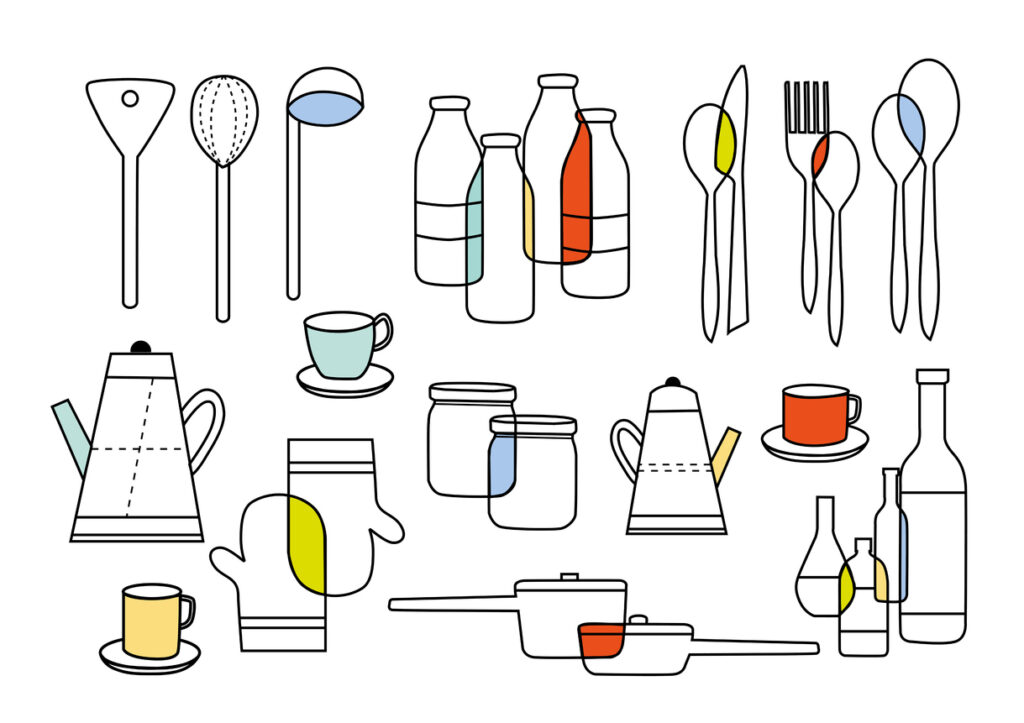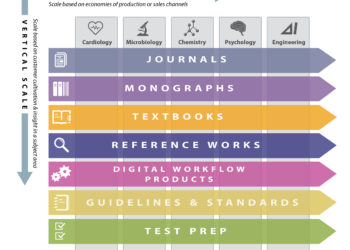Continuing our Kitchen Essentials series of interviews with leaders of infrastructure organizations, today we are speaking with Lauren Kane, CEO of BioOne, a community-based platform that provides global distribution for more than 350 journals and eBooks in the biological, ecological, and environmental sciences.

Please tell us a bit about yourself — your role at BioOne, how you got there, and why you embarked on a career in research infrastructure?
I’m the CEO of BioOne, a nonprofit aggregator and publishing collaborative for 150 scientific societies, museums, research organizations, and independent presses. I’ve been lucky to work in scholarly communications for the entirety of my career, beginning with a role as an Editorial Coordinator for Blackwell Publishing (now Wiley) in 2004. While like many of us I fell into the sector by chance, I was hooked early on by the incredibly bright people, the unique challenges, and the ability to make meaningful improvements to the research process.
What do you like most and least about working in research infrastructure?
Whether in the BioOne community, those working in research infrastructure, or more broadly throughout scholarly communications, I am continuously impressed with the energy, insight, and determination of the people around me.
On the flip side, the economics of our sector can be challenging, and lack of funding – especially for independent initiatives – can be a barrier to progress.
Based on your own experiences, what advice would you give someone starting, or thinking of starting, a career in research infrastructure?
Join us! Like any industry, we benefit from the diversity of experience, perspectives, new ideas, and creative approaches that new entrants bring. With all respect to those that have worked in this space for many years (myself included!), I think we have a tendency to over-rely on existing systems and processes, instead of focusing on what might or should be for peak efficiency or impact. New joiners bring with them the knowledge of business, product, and technology models that are fueling other sectors, and challenge us to keep pace.
What sort of infrastructure does BioOne provide, and who are your users?
As a content aggregator, BioOne hosts and disseminates research for 150 organizations across 21 countries. About half of this group feature their journals exclusively through BioOne Complete, while the other half work with BioOne in addition to a primary publisher. For all participants, we provide a post-review publication workflow, digital library platform, and sales, marketing, and distribution services. None of our infrastructure is proprietary – our model is to partner and collaborate versus create and duplicate. As such, our small team of eight full time employees is supplemented by core technology partnerships, including with the scientific society SPIE who hosts our platform.
BioOne’s stakeholders represent all corners of the ecosystem – societies, publishers, libraries, research bodies, funders, and of course, the students, practitioners, and researchers who make up our user base.
How is BioOne sustained financially?
BioOne is 100% financially self-sustaining, primarily through sales of the flagship journals collection, BioOne Complete. BioOne’s model is to keep costs to supporting libraries low – 93% less than the per-title average in biology – while returning sustaining revenue back to our society partners, reinvesting in the scientific enterprise. Since 2001, we have returned nearly $70 million in royalties back to the nonprofit publishing community.
Recently, we have announced a plan for a 2026 Subscribe to Open (S2O) pilot featuring up to 80 society titles in BioOne Complete. This marks the first significant shift in BioOne’s financial model in two decades, and we are excited to see how the pilot is received by our extended community.
As the leader of a research infrastructure organization, what do you think are the biggest opportunities we’ve not yet realized as a community — and what’s stopping us?
To me, the answer is in the question. There is far too little that we do “as a community.” Even among nonprofit organizations, meaningful partnerships are rare, duplicate efforts commonplace, and far too much of our collective funds are spent on having our “own version” of tools, technologies, and infrastructure. The result is less money in the system that can be applied to real innovation and broader industry challenges.
Organizations like ORCID and Crossref provide compelling examples of the benefits of shared infrastructure (imagine if every publisher insisted on their own version of a persistent identifier, with no interoperability or facility to spread costs across millions of articles!) but I often wonder if these collective initiatives would still succeed if they were attempted today. I would like to see us – as a community – examine those parts of the research ecosystem that do not require or benefit from proprietary or exclusive approaches, and instead seek to fulfill them collectively through a public utilities or other community support model.
Looking at your own organization, what are you most proud of, and what keeps you awake at night?
I’m immensely proud to be a part of the BioOne team. People are often shocked to learn that this $13M/year operation serving 150 publishers, 3,500 accessing libraries, and millions of global users is run by just eight full-time employees. The reason that we can do this – aside from my incredibly talented colleagues! – is that we proudly collaborate and partner for non-core functions. This allows us to stay lean and nimble, and keep our operating costs down. Each year we deliver more than 65% of net sales back to our publishing societies.
BioOne serves as the exclusive publisher for about half of our partner base. These are mostly volunteer-run smaller societies and content organizations outside of North America. Among these partners, the BioOne Revenue Share is typically their sole source of publications income. We are frequently told that without it, these programs would not be able to subsist. So what keeps me up at night? The immense responsibility (and concurrent honor) of ensuring that these partners remain financially viable, and that the bibliodiversity across the fields in which we publish — especially relating to key areas such as climate change and conservation – remains robust.
What impact has/does/will AI have on BioOne?
AI will have a huge impact on all organizations and our ecosystem as a whole. But I will save that broader discussion to those talented Scholarly Kitchen technology pundits that I read with equal parts wonder and trepidation.
Thinking more on the enablement-side, I am interested in AI as an optimizer, helping us to do what we do more easily and efficiently and at a lower cost. These are magical words for a lean operation like BioOne, which is constantly looking to do more with less. For instance, we have long had on our strategic wish list initiatives relating to accessibility and science communication, such as captioning, translations, and article lay summaries. Historically, these efforts have been cost-prohibitive for us to do at scale, but we are already seeing the effect of AI in automating much of these endeavors, and thus dramatically reducing the cost.
In this way I see AI as having the potential to be an equalizer, by making capabilities that were previously available to publishers of significant size or wealth available to many. The downstream effect that this will have on user experience and scholarship as a whole is transformational.
What changes do you think we’ll see in terms of the overall research infrastructure over the next five to ten years, and how will they impact the kinds of roles you’ll be hiring for at BioOne?
I anticipate continued consolidation within the industry, with for-profit and nonprofit organizations alike realizing that they can do more in alliance than in competition. Research infrastructure organizations in particular will join forces to combine technologies and workflow pieces in pursuit of the holy grail of “end to end” solutions. Though cost efficiencies and increased margins at scale may be the key drivers, the end result should also be a less truncated and more streamlined author and researcher journey.
BioOne is an active collaborator in the space, from its formal partnership with the scientific society SPIE for platform hosting to its alliance with fellow nonprofit aggregators Project MUSE and GeoscienceWorld for strategic advancement and economies of scale. Over the next decade, I expect that this consortial approach will continue and deepen, requiring all existing and new team members to deftly manage change and see the opportunities in collective action.



